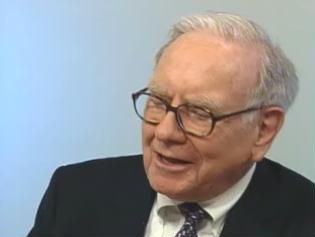
Daryl, a final-year law undergraduate at the National University of Singapore, contributed this article, a timely topic during this period of indiscriminate dumping of stocks. When he is not studying, he enjoys being in the sun and dreaming about his interests - travel photography and marine reef tanks. Recently, he has been wondering if any entrepreneur would start a breakfast cereal line called Credit Crunch. Daryl can be contacted at
IN 1928, Benjamin Graham became the first proponent of value investing as he began teaching the course at Columbia Business School. At its essence, value investing involves ignoring market sentiments and buying securities at a discount to their intrinsic value.
This discount is also known as the “margin of safety”, providing a cushion for research errors and unforeseeable risks. Graham’s efforts eventually culminated in the publications of "Security Analysis" and "The Intelligent Investor", both of which have been hailed as classics for any serious investor.
Since then, value managers have produced some of the finest and most consistent returns the industry has seen. John Neff averaged 13.7% in his 31-year career with the Vanguard Windsor Fund. Jean-Marie Eveillard returned 15.5% over 25 years at the First Eagle Global Fund before retiring in 2004. Other prominent value practitioners such as Martin Whitman and Philip Carret, and their track records, need no further introduction.
In the face of such overwhelming empirical evidence, it is suffice to say these results were no flukes. It stands to reason that value investing not only makes sense, more importantly, it works. And if it works, common sense suggests that schools ought to be teaching it and people need go no further than to emulate the methods used by these value managers. Why then do we find value investing a relatively less trodden path and lacking an audience?For that, I offer three reasons:
Safety in Numbers
Following the value approach regularly requires you to buck the trend and take positions against the market. It is typically in a nose-diving market where we find the most bargains. But few actually muster the courage to ‘catch falling knives’. When prices are falling and nobody wants to go anywhere near equities, your first instinct is, understandably, to follow the herd.
Nobody likes to be alone in thought and, much less, in action. We seek company and safety in numbers. It is better to maintain nonchalance and remain with the pack.Most individual investors, myself included, dislike and lack the conviction to be a contrarian. We find that especially trying because we are often hamstrung by our lack of self-confidence and the pressure to conform.
We crave the vindication that comes from the knowledge that your peers and professional managers have purchased the same ‘hot’ stock as you did. Few, amongst us, have the stomach to endure criticism and sometimes, even derision regarding our investment choices. But yet, that is the very fundamental quality demanded of a value investor – independence of thought and the courage to swim against the tide when the odds are in your favour.
Even professional fund managers have little incentive to pursue the value approach. Like pack animals in the wild, you fall prey if you stray from the party. If fund managers take contrary bets and are eventually proved wrong, resulting in large losses, it will not be long before they join the ranks of the unemployed. But they are somehow less blame worthy and likely to lose their jobs if the entire industry falls off a cliff together.
After all, everyone made the same mistake and it was market conditions that caused the loss. Their competence is not in question. Their clients are, therefore, less inclined to bay for their blood when everyone else is losing money. Hence, why stick out your neck when you can follow your peers and still keep your job when markets turn sour? Momentum and trend investing provide so much more than value investing in terms of job security.It is not difficult to comprehend why value investing is shunned. The value investor in you wants to pursue a ‘margin of safety’ but the human side of you, seeks ‘safety in numbers’ – and rightly so, because the only thing more painful than losing money is losing money alone.
Of Greed, Emotion and Vanity
Suppose you are an aspiring value investor, you just read a shelf of books and memorized the principles expounded by Graham or Buffett. You then set off to diligently research your next purchase. You vow to never over pay and succumb to the folly of trend chasers.
But the next things you notice are that your neighbour on the right just made 50% returns on property stocks and the guy to the left made a killing trading S-chips (all of which did actually happen last year). Your convictions begin to sway and you invariably question if a long-term investment approach is as rewarding as the almost instant gratification of short-term gains. But mostly, you begin to wonder if the person who invented the saying, “One bird in hand is worth two in the bushes” was actually ahead of his time.
Even as people remind themselves not to be greedy or emotionally involved with their investments, they constantly find themselves inundated with information about the latest hot IPO or investment fad. Most value investors would probably have encountered this scenario at some point in their journey. Some day it would be mortgage securities, the next it will be commodities. And like moths drawn to the flames, they inevitably join the feeding frenzy. The prospect of outsized short-term gains is just too tempting to ignore.The more sensible of the lot may well be aware that the trends never last but they cannot help but be attracted by short term, get-rich-quick solutions. In short, there is no salve for the ambitious investor like the prospect of immediate and positive returns. And while it lasts, who would want to be a value investor and wait for an investment to bear fruit in ten years?
Value investing can be painful at times
The dreariness of value investing does not stop here. In fact, it is about to get worse. Much discomfort is inflicted when you periodically lag behind in your investments. It may often be years before the market wakes up to the merits of your favourite stock and until then, you may be knee deep in paper losses. We have not even begun to consider the possibility that your investment thesis was a dud from the start.The sharpest pain is, however, reserved for the moment when the newly purchased stock, which you laboriously researched, tanks 25%.
All that certitude you obtained from your meticulous research is instantly tested when the share price heads south, contrary to your expectations. Here you are confronted with the unenviable choice of cutting your losses or averaging down. If you fervently believe the fundamentals of your case, then buying more of a good thing at a cheaper price may the wiser option. But mere mortals like us sorely lack the ability to detach our judgments from emotions. Investment decisions made under these conditions are hardly a walk in the park.If you are a value investor, you are a long-term investor. If you are a long-term investor, you are not trying to outdo a benchmark on a short-term basis. To do that, you have to accept in advance that every now and then you will be underwater and your portfolio will suffer. That can be painful at times, even for the most experienced of investors. Ignoring the pain and sticking to your guns is difficult to achieve because human nature shrinks from pain. That is why not many people invest this way.

Is it worth it?
In short, value investing is not widely embraced because most of the principles advocated are counter-intuitive. When everyone is running screaming from a building on fire, nobody instinctively runs into the building. The value approach, however, suggests the latter is the wiser option – you run into the building to see if anyone abandoned anything of value. Being a value investor requires you to cast aside emotion and invest only with your head.
And while you are at that, I hope you have a high tolerance for pain. Suffice to say these are not qualities or instincts that occur naturally to the human mind.But if you believe as I do, that value investing is the only sensible form of investing, then these obstacles are merely walls meant to keep the rest out. I will conclude with an anecdote about Warren Buffett.
A Wall Street banker once recalled a dinner with Mr. Buffett where he had an exceptional sandwich at a restaurant. A few days later, while deciding the venue for dinner, Mr. Buffett said, “Let’s go back to the same restaurant.” The banker recoiled and protested that they were there just a few days back. “Precisely. Why take the risk somewhere else? We know exactly what we are going to get.” Mr. Buffett answered. Clearly, Mr. Buffett invests in companies where the odds are great that they will not disappoint. Likewise, I will stick to an investment approach where the odds are great that it will deliver.
Related story: DANIELXX: The sunny side of bear markets







